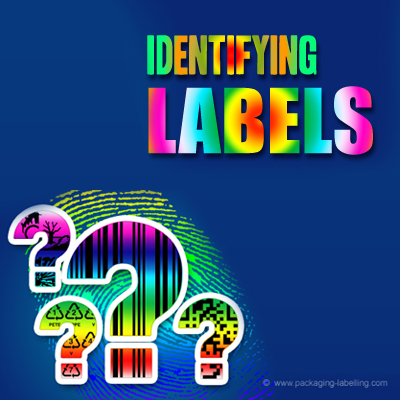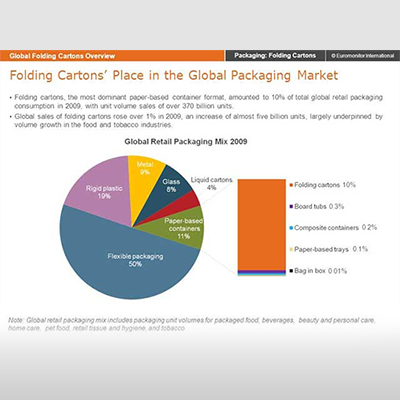Flexible Packaging Dynamics: Trends, Challenges, and Opportunities

Introduction
Discover the ever-evolving world of flexible packaging as we delve into the latest trends, challenges, and opportunities that lie within this dynamic industry. In today's fast-paced market, businesses are constantly searching for innovative ways to optimize their packaging strategies. Flexible packaging has emerged as a game-changer, offering versatility, convenience, and sustainability.
This article explores the key trends shaping the flexible packaging landscape, from the rise of eco-friendly materials to the increasing demand for customizable solutions. We will also uncover the challenges companies face when adopting flexible packaging, such as ensuring product safety and meeting regulatory standards.
Amidst these challenges, exciting opportunities abound for businesses willing to embrace flexible packaging. From expanding market reach to driving brand differentiation, we will explore how this packaging format can enhance product visibility and consumer appeal.
With a focus on providing valuable insights and practical advice, this article aims to equip businesses with the knowledge they need to navigate the ever-changing world of flexible packaging. Join us as we dive into the trends, challenges, and opportunities that will shape the future of this industry.
| Read More: Flexible Packaging Solutions: Sustainability and Convenience in Focus |
The Growing Demand for Flexible Packaging
Flexibility has become a buzzword in the packaging industry, and for good reason. The demand for flexible packaging has been steadily increasing, driven by factors such as convenience, sustainability, and cost-effectiveness. In a fast-paced world where consumers are constantly on the go, flexible packaging offers the convenience of easy storage, portability, and resealability.
One of the key drivers of the growing demand for flexible packaging is its eco-friendly nature. With increasing awareness of environmental issues, consumers are actively seeking sustainable packaging solutions. Flexible packaging offers a range of eco-friendly materials, such as biodegradable films and recyclable plastics that reduce carbon footprint and waste.
Furthermore, flexible packaging allows for efficient use of resources. Its lightweight nature reduces transportation costs and energy consumption, making it an attractive option for businesses looking to reduce their environmental impact. As a result, the demand for flexible packaging continues to rise across industries, including food and beverage, pharmaceuticals, and personal care.
Trends in Flexible Packaging Design
The world of flexible packaging design is constantly evolving, driven by consumer preferences and technological advancements. One of the key trends in flexible packaging design is the focus on visual appeal. With increasing competition on store shelves and online platforms, brands are investing in eye-catching designs to capture consumer attention.
In addition to aesthetics, functionality is also a crucial aspect of flexible packaging design. Consumers are looking for packaging that is easy to open, resealable, and convenient to use. Innovative features such as tear notches, spouts, and zip-lock closures are becoming
increasingly popular, enhancing the user experience and prolonging product freshness.
Another trend in flexible packaging design is the rise of customizable solutions. Brands are seeking packaging that reflects their unique identity and resonates with their target audience. Digital printing technologies have made it easier than ever to create personalized packaging, allowing businesses to stand out from the crowd and strengthen their brand image.
Sustainable Packaging Solutions in the Flexible Packaging Industry
Sustainability is a top priority for businesses across industries, and the flexible packaging industry is no exception. With the growing demand for eco-friendly solutions, manufacturers are developing sustainable packaging materials and adopting environmentally conscious practices.
One of the key sustainable packaging solutions in the flexible packaging industry is the use of biodegradable films. These films are made from renewable resources such as plant-based starches and cellulose, which can break down naturally over time. Biodegradable films offer a viable alternative to traditional plastics, reducing environmental impact and waste.
Recyclable plastics are also gaining traction in the flexible packaging industry. These plastics can be processed and reused in the production of new packaging materials, reducing the reliance on virgin materials and minimizing landfill waste. Additionally, advancements in recycling technologies are making it easier to separate different layers of flexible packaging, improving the recyclability of multi-layered structures.
Challenges in the Flexible Packaging Industry
While flexible packaging offers numerous benefits, it also presents challenges that businesses need to navigate. One of the primary challenges is ensuring product safety. Flexible packaging materials must be compatible with the product they contain, ensuring that there is no contamination or deterioration. Manufacturers need to conduct thorough testing and adhere to strict quality control measures to guarantee product integrity.
Meeting regulatory standards is another challenge in the flexible packaging industry. Different countries and regions have varying regulations governing packaging materials and labeling requirements. Businesses operating in multiple markets need to stay updated on the latest regulations and ensure compliance to avoid penalties and reputational damage.
Additionally, flexible packaging can be susceptible to damage during transportation and storage. Businesses must invest in appropriate handling and storage practices, as well as robust packaging design, to protect the product and maintain its quality.
Opportunities for Innovation in Flexible Packaging
Amidst the challenges, the flexible packaging industry presents exciting opportunities for innovation. One such opportunity is the potential for expanding market reach. Flexible packaging offers versatility in terms of size, shape, and functionality, making it suitable for a wide range of products. Businesses can leverage this flexibility to tap into new markets and target diverse consumer segments.
Another opportunity lies in driving brand differentiation. With the rise of private-label brands and increased competition, standing out from the crowd is essential. Flexible packaging allows for creative and unique designs that can help brands distinguish themselves and create a lasting impression on consumers.
Furthermore, flexible packaging opens doors for enhanced product visibility and consumer appeal. The use of transparent films and windows allows consumers to see the product inside, fostering trust and confidence in the brand. Additionally, flexible packaging offers ample space for branding and product information, enabling businesses to communicate their values and key selling points effectively.
The Role of Technology in Flexible Packaging
Technology plays a crucial role in driving innovation and efficiency in the flexible packaging industry. Advancements in printing technologies have revolutionized packaging design, enabling businesses to create high-quality, visually appealing packaging at a faster pace. Digital printing, in particular, allows for customization, shorter lead times, and cost-effective small print runs.
Automation and robotics have also made significant contributions to the flexible packaging industry. From automated filling and sealing machines to robotic quality control systems, these technologies streamline production processes, improve accuracy, and reduce labor costs.
Additionally, smart packaging solutions, such as temperature-sensitive films and QR codes, enhance product safety and provide valuable information to consumers.
Key Players in the Flexible Packaging Market
The flexible packaging market is highly competitive, with several key players dominating the industry. These players possess extensive experience, technical expertise, and strong distribution networks, making them influential in shaping the market dynamics. Some of the notable key players in the flexible packaging market include Amcor Limited, Sealed Air Corporation, Mondi Group, Berry Global Inc., and Huhtamaki Group.
These companies offer a wide range of flexible packaging solutions, catering to diverse customer needs and requirements. They invest heavily in research and development, constantly striving to innovate and stay ahead of market trends. With their global presence and strong partnerships, these key players play a pivotal role in driving the growth and development of the flexible packaging industry.
Conclusion: The Future of Flexible Packaging
In conclusion, the world of flexible packaging is dynamic and ever-evolving. The growing demand for convenience, sustainability, and customization has paved the way for innovative trends in packaging design. While challenges such as product safety and regulatory compliance exist, businesses can capitalize on the opportunities for market expansion, brand differentiation, and enhanced consumer appeal.
With advancements in technology and a focus on sustainability, the future of flexible packaging looks promising. As businesses continue to adapt to changing consumer preferences and market dynamics, flexible packaging will play a vital role in creating packaging solutions that are both functional and environmentally friendly. By staying informed and embracing the potential of flexible packaging, businesses can position themselves for success in this evolving industry.









